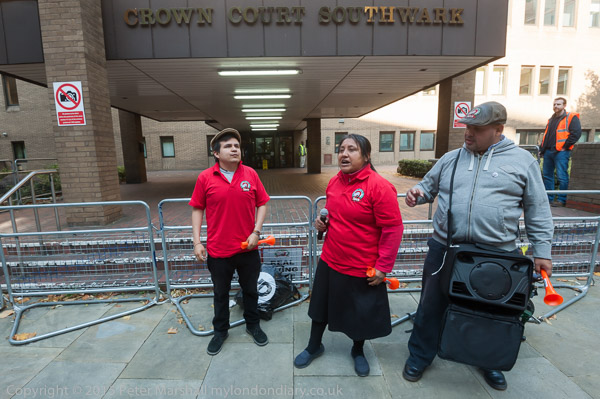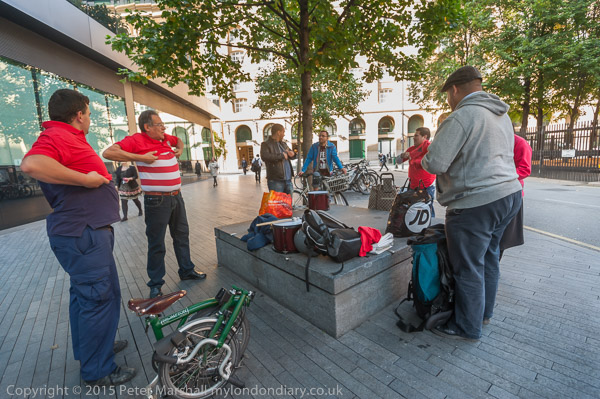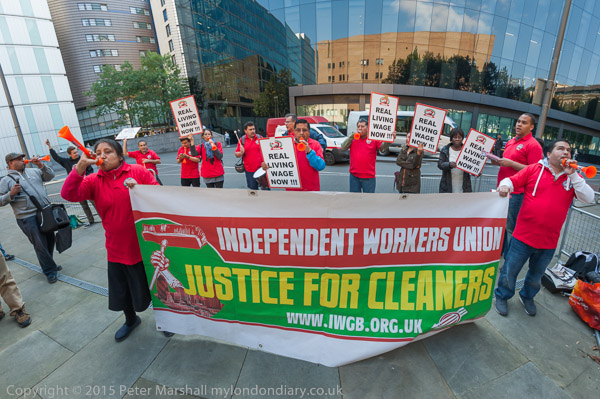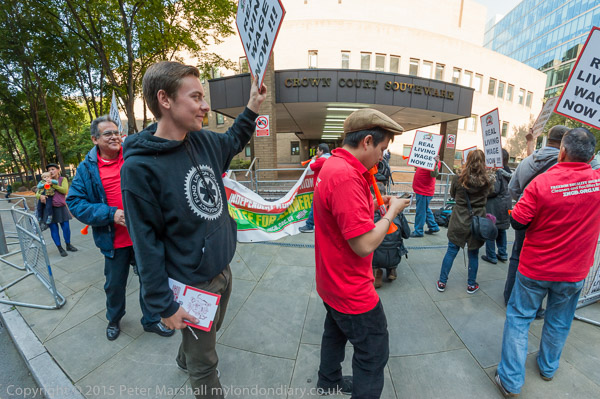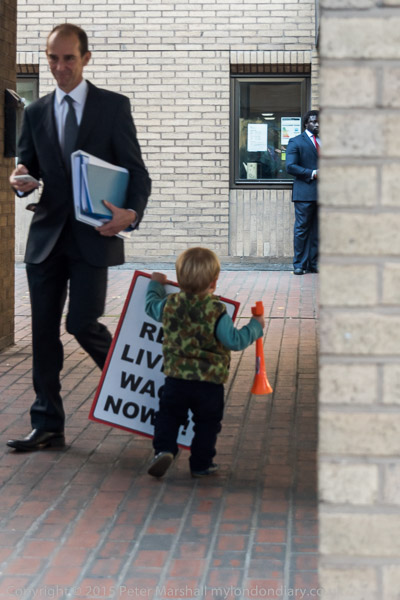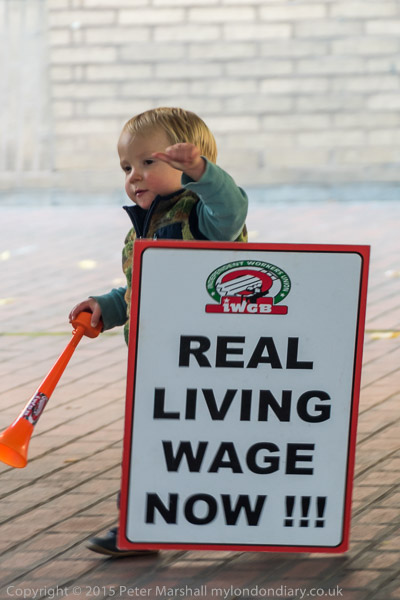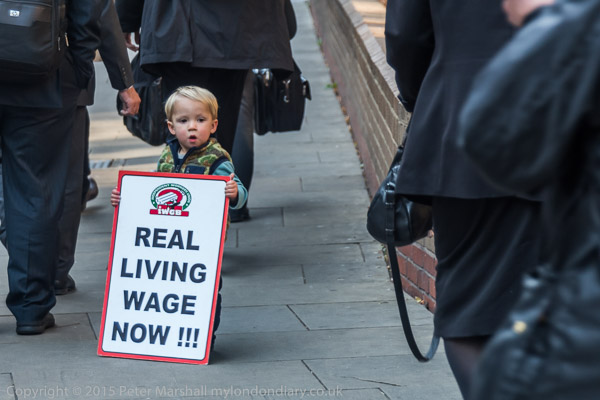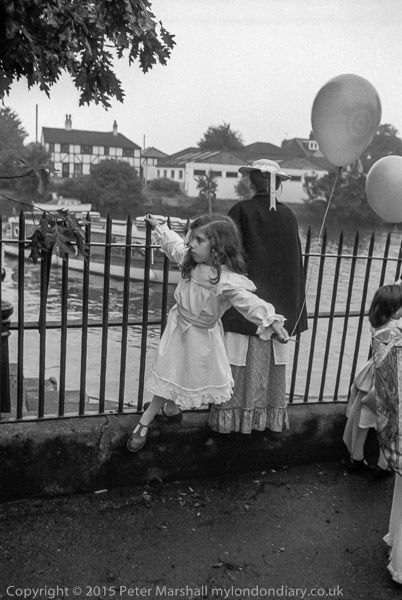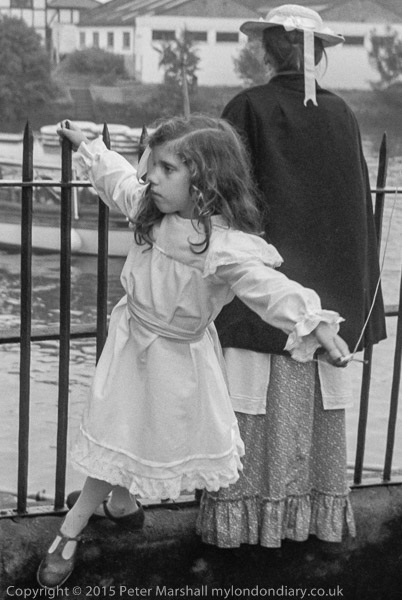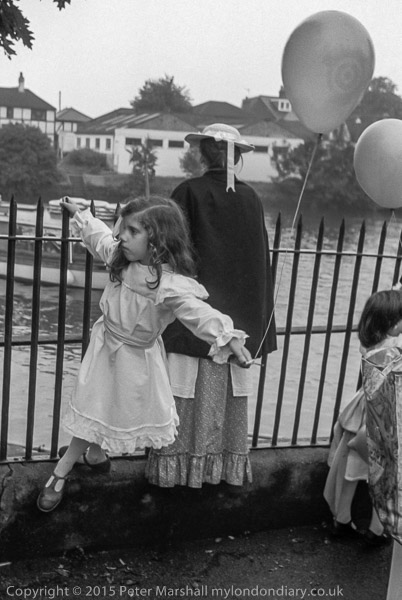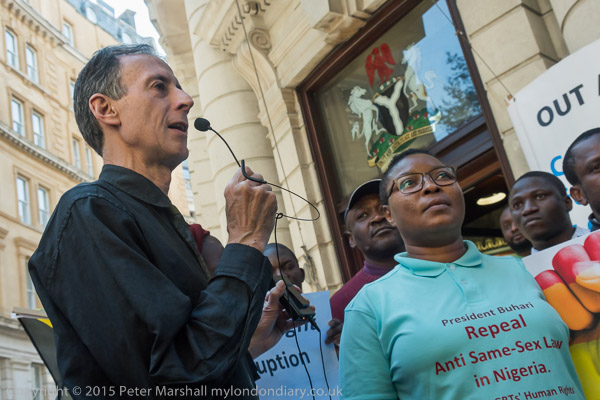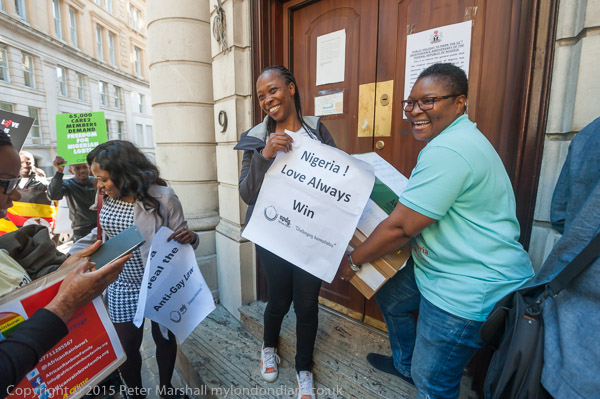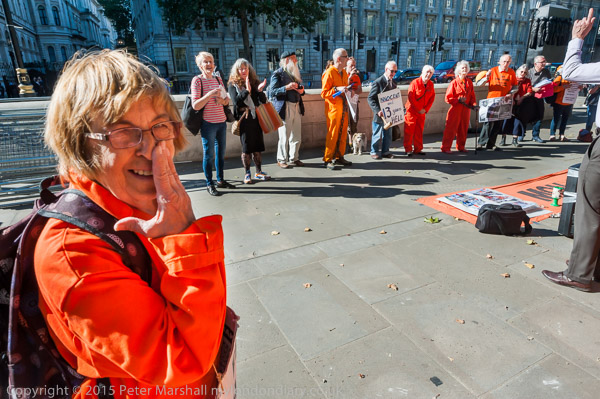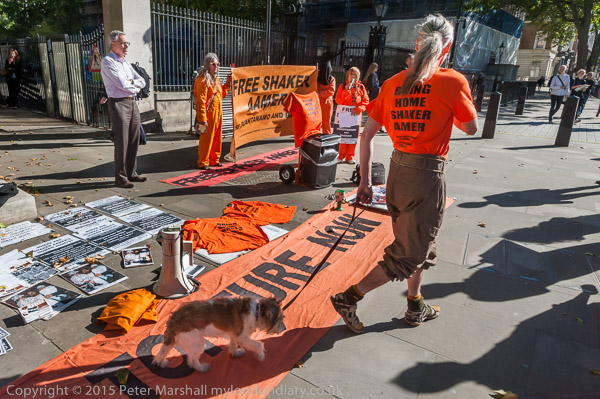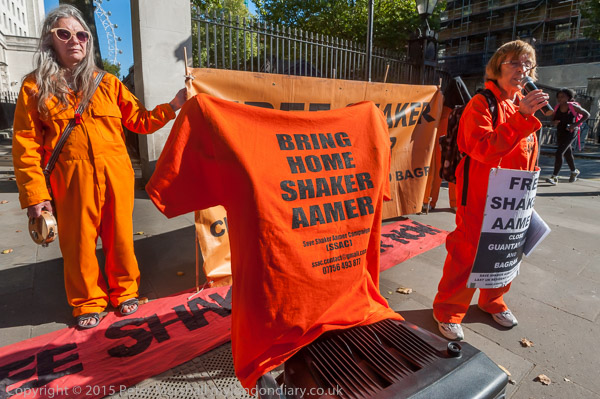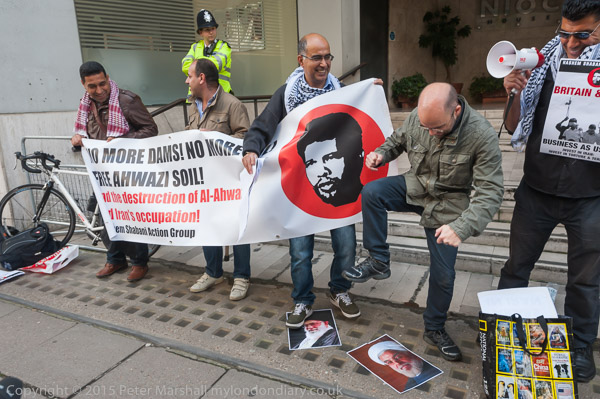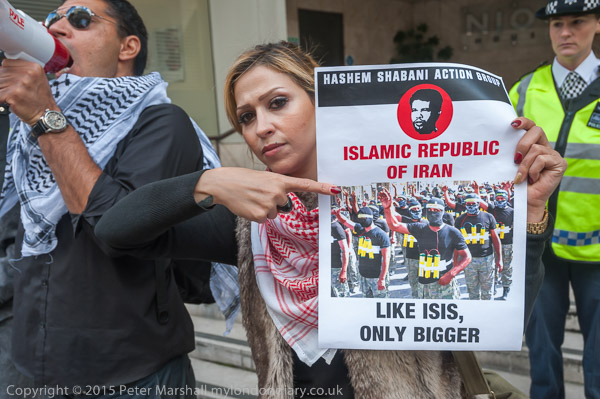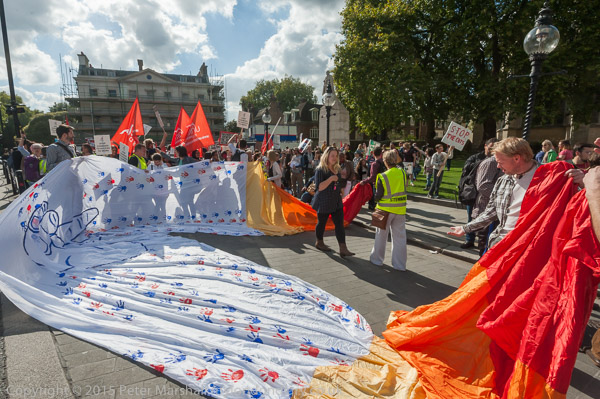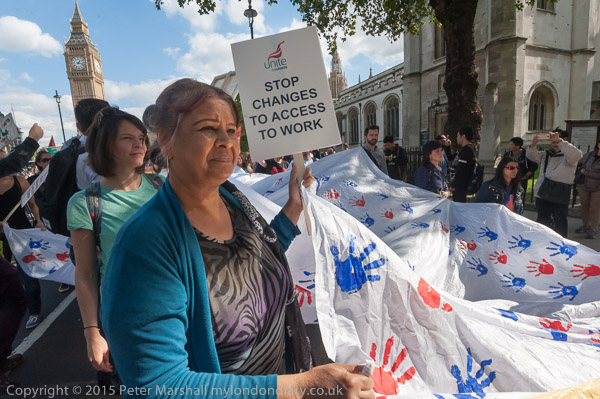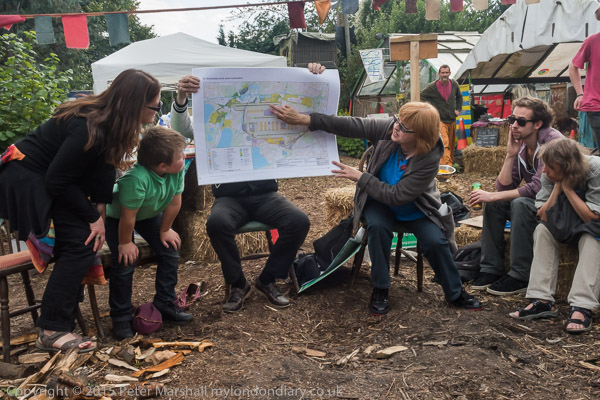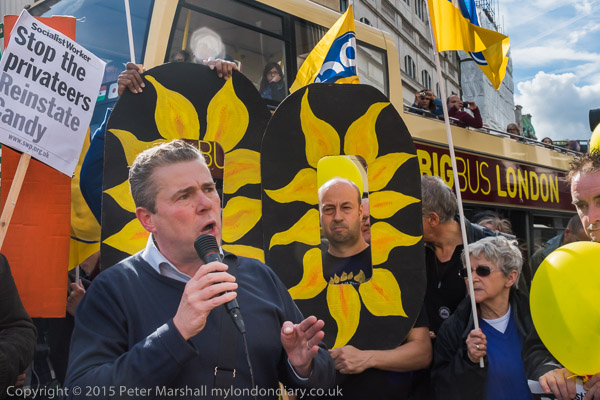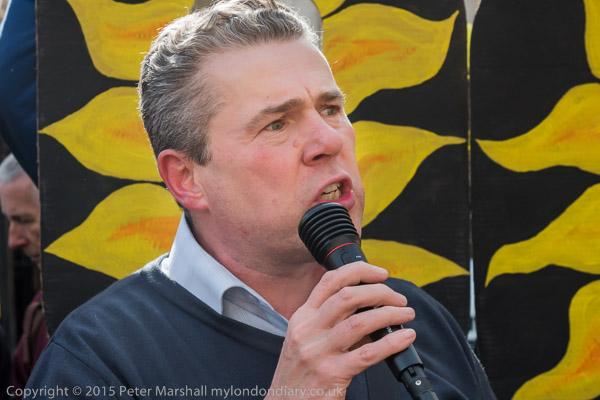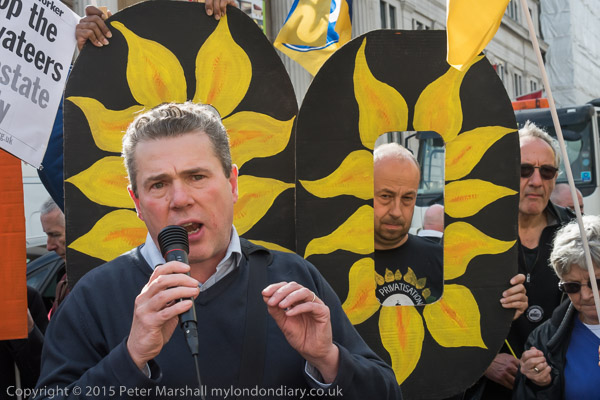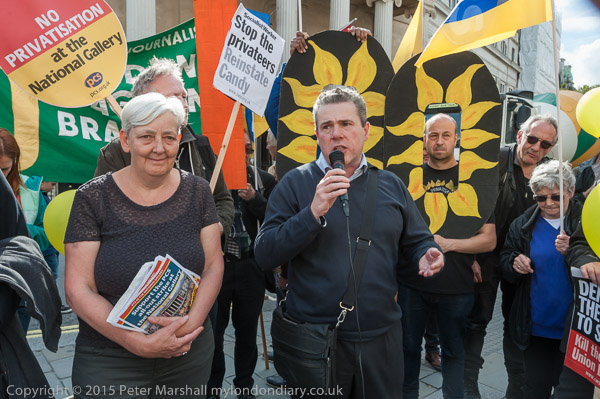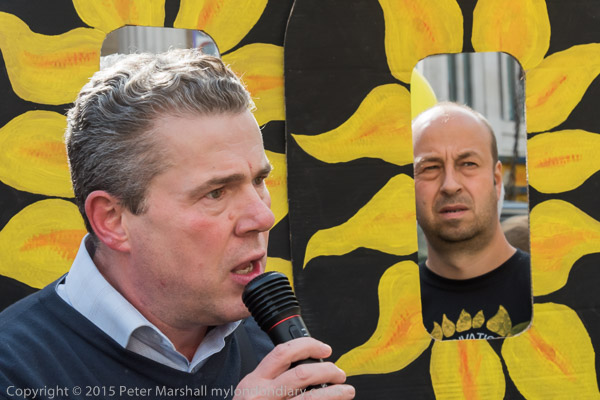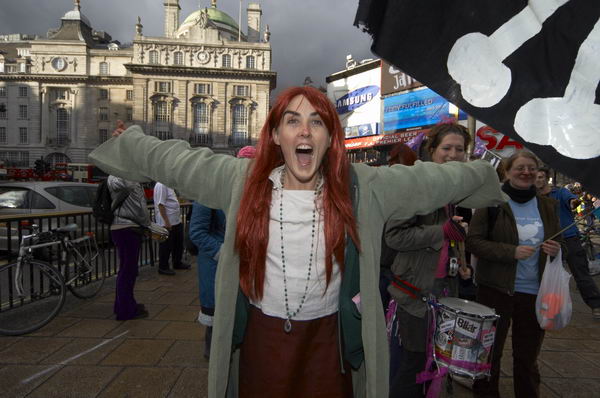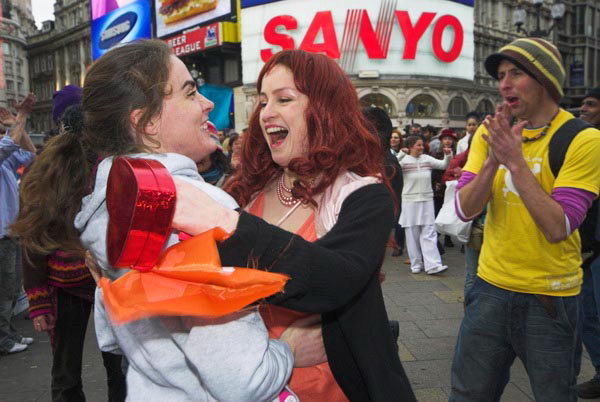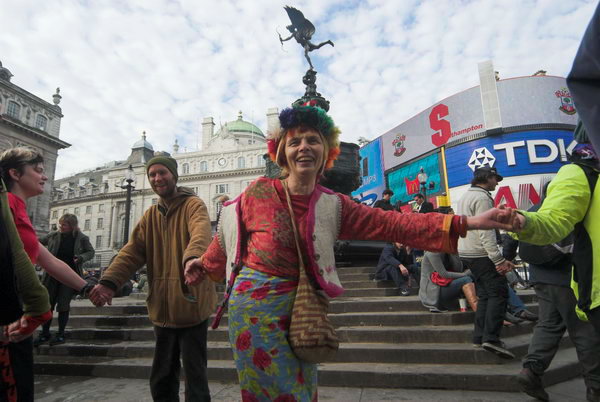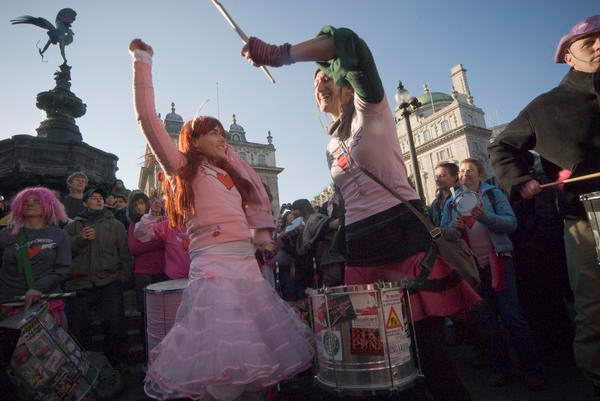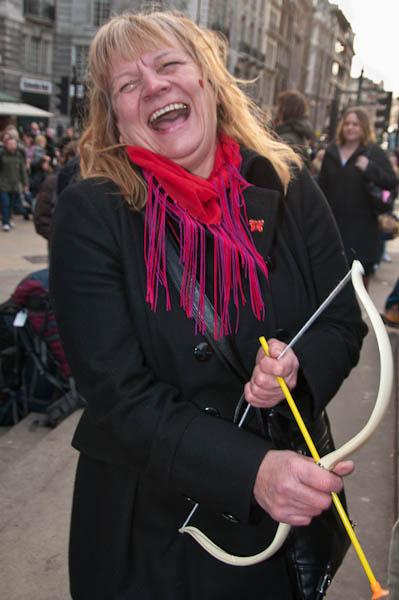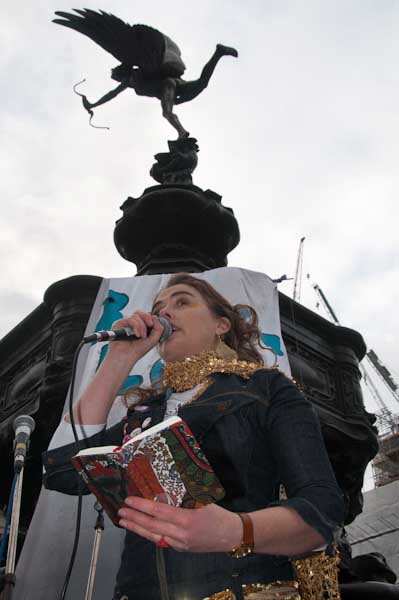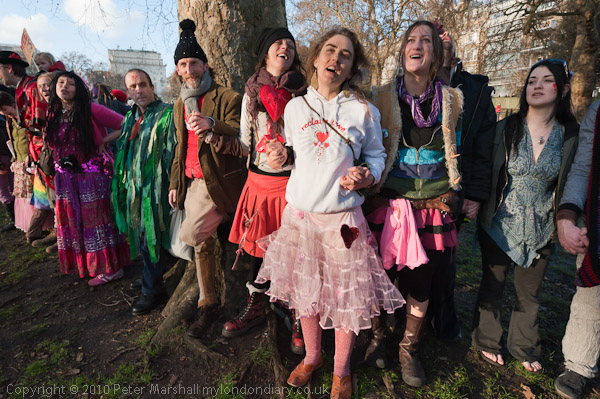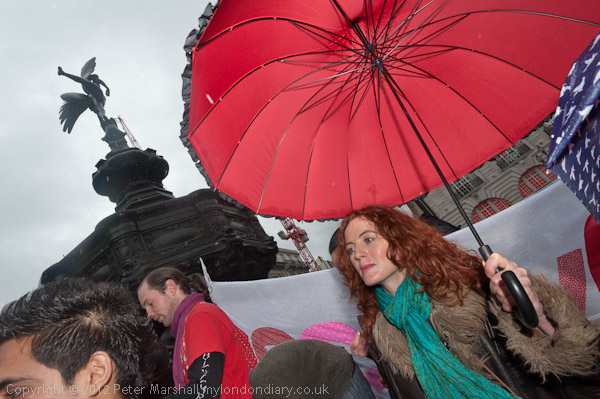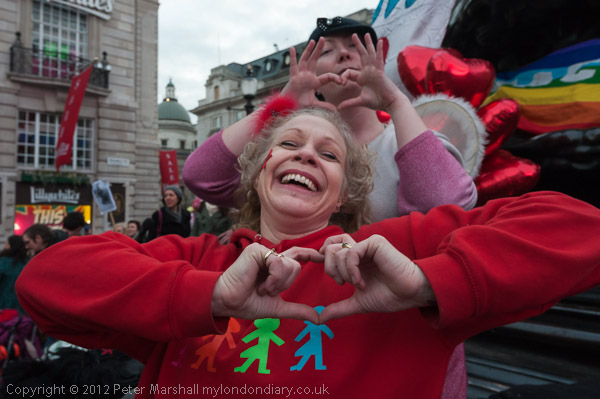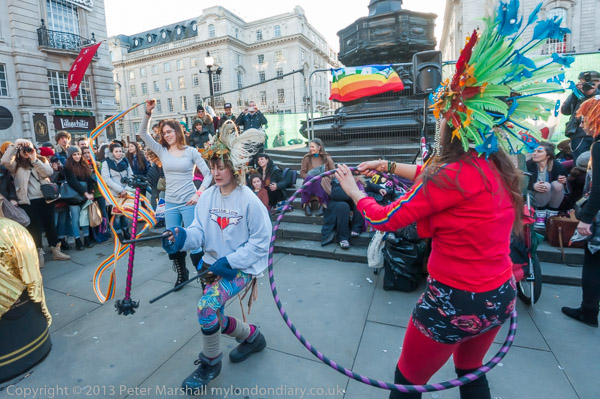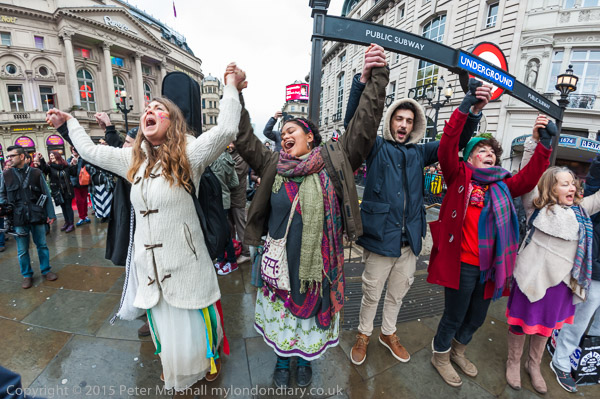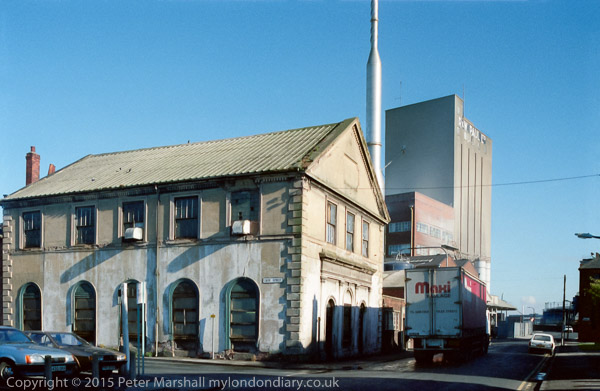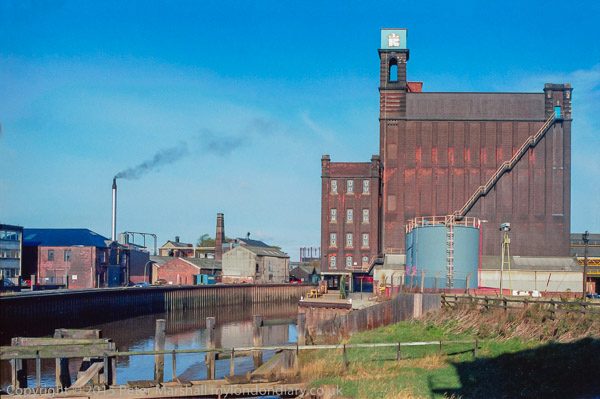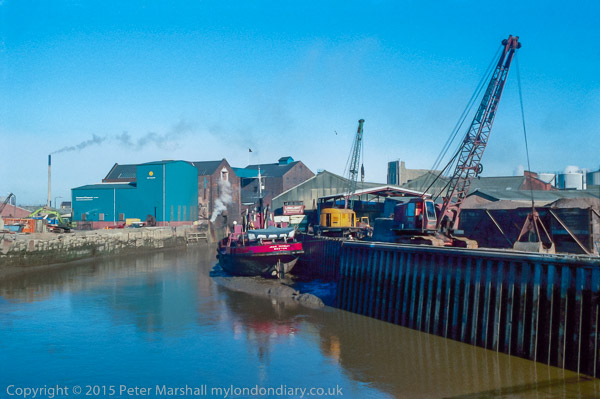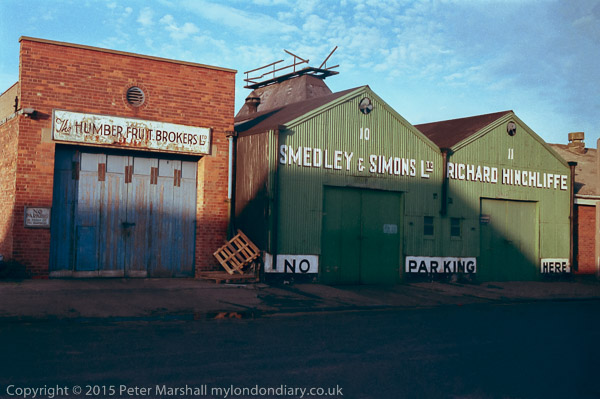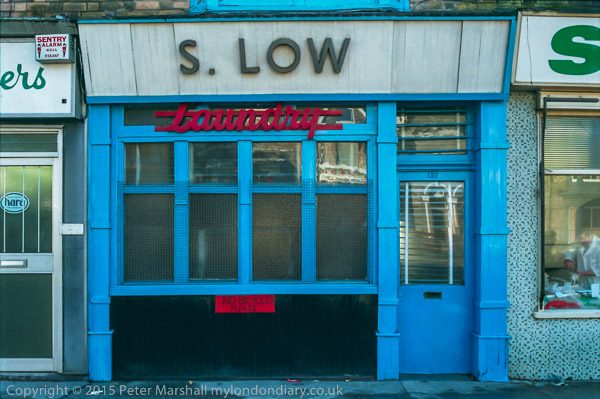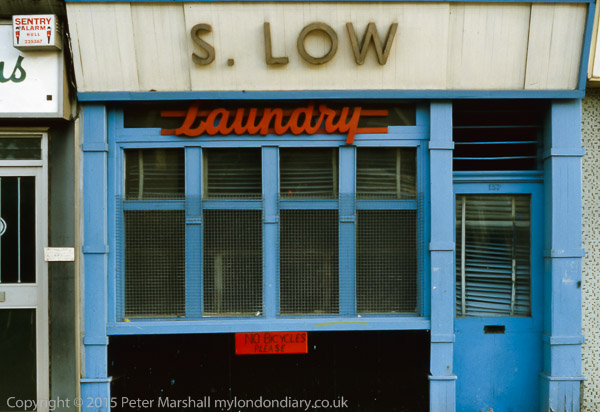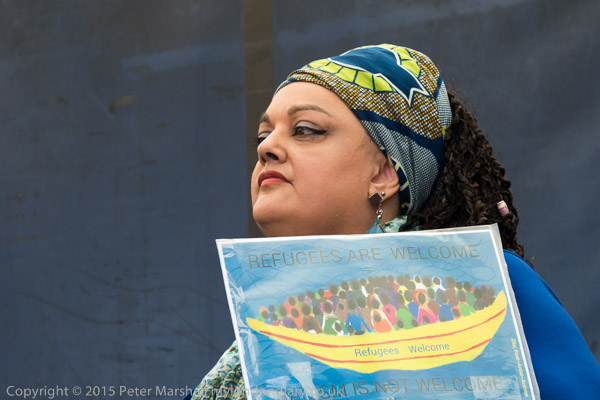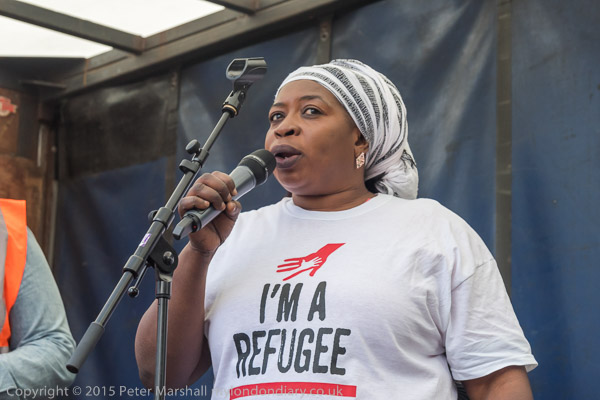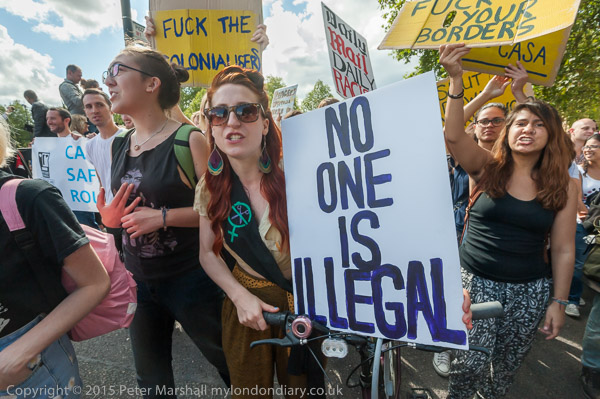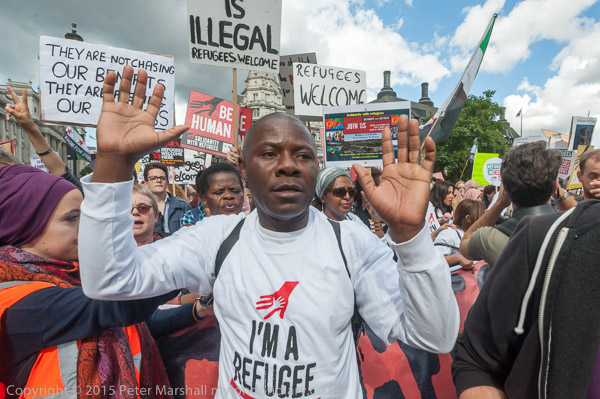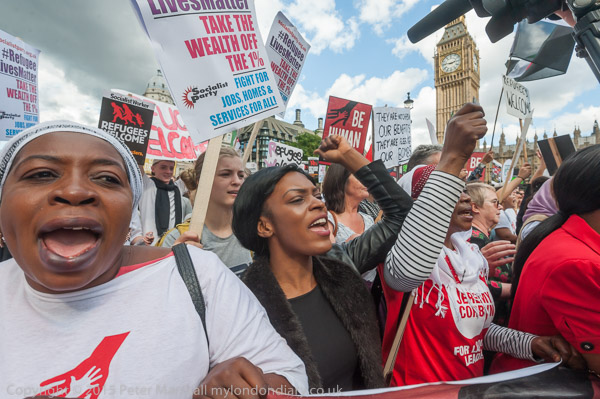It’s cold and wet in London today, and I’m suffering a little from a chest infection which means I can’t walk around carrying my camera bag – but otherwise I would be photographing a housing protest. Instead I’m writing about one I did cover on a much nicer day last September.
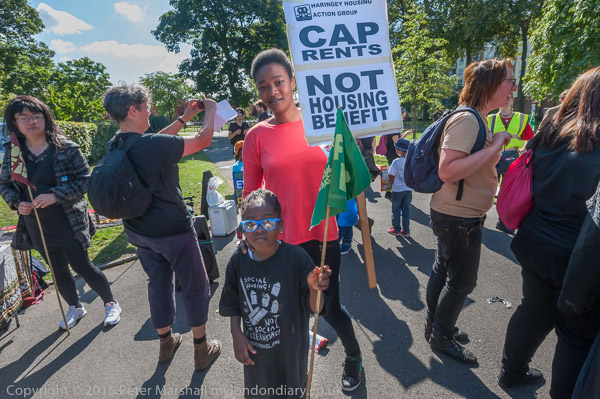
D700 16-35mm at 20mm, 1/400s, f/10, ISO 640,
Housing is an issue that has become vital in the UK and in London in particular, where overseas investment in property has caused house prices to rocket. Of course houses have long been too expensive here for most people to own, at least in the posher areas of the city, but now that has become true even in what were the most run-down and cheapest areas.
Back in Victorian times, the wealthier parts of the society realised that the poor had to have homes, and set up various companies and charities to provide accommodation for the ‘working poor’, some on a commercial basis and others charitable, but all genuinely philanthropic in design. Later, the London County Council and local borough councils built large estates of council housing, again at rents which the poor could afford, and a huge expansion of London between the wars provided affordable housing to rent or buy for the growing middle classes.
Slum clearance continued after the second war, with councils still managing to build large areas of council housing, and with the establishment of a ring of new towns outside London, one of which I began work in as a teacher in 1970, living in what was then for me a grand new flat at a reasonable rent from the development authority.
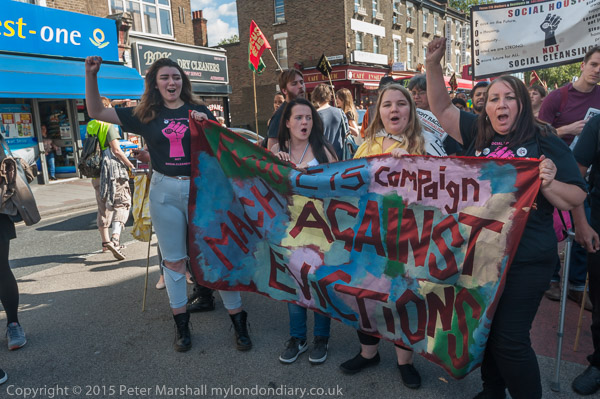
D700, 16-35 at 29mm 1/320s, f/9, ISO 640
Since then, things have gone downhill. Successive governments have prevented the building of council housing in different ways, but the real blow to social housing was the ‘right to buy’ introduced by the Thatcher government. In itself the encouragement of people to own the property they lived in was perhaps not a mistake, and was certainly popular with many who took the generous discounts, but as a housing policy without an accompanying commitment to replace the loss of social housing it has been disastrous.
It was too both a symptom and a cause of a growing polarisation in society, an ‘I’m alright Jack’ policy which reflected an end to empathy for the poor and feelings of community. Politicians – whether Tory of New Labour – were in it for what they could make and now longer to serve.
In recent years things have become even worse, with local authorities increasingly finding it impossible to meet even their statutory responsibilities for housing. One of the places where this came to a head was in Newham, where the council decided to stop funding for a hostel for young women with children, threatening eviction and offering them rehousing in distant areas of the country, away from jobs, families and other support. Unlike others, the residents of the Focus E15 hostel in Stratford decided to fight.
Their campaign is one I’ve followed and been impressed by, not just for what they have achieved for themselves, but more for the effect it has had on other groups also fighting for housing justice, bringing together a large number of them from around the capital and helping to raise a much greater awareness of the problems faced by so many. Their ‘Housing for All’ campaign is out on the street in Stratford every Saturday.
Saturday 19th September was the second anniversary of their campaign. They had marked their first birthday by an occupation of a block of four flats on the nearby Carpenters Estate, which Newham council have been emptying of tenants and leaseholders over the last ten years. One of the flats – all well-built and in good condition – still had the 2004 calendar left on the wall when the previous residents left.
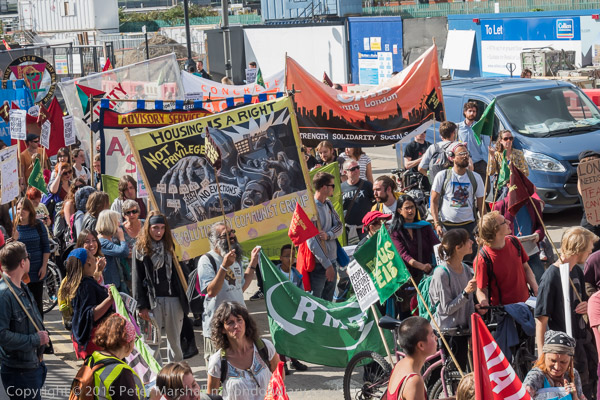
D810, 28-200 DX at 50mm(75mm) 1/500s, f/11, ISO 800,
Like many council estates, the Carpenters was well-designed and well-built – London councils employed many of the country’s leading architects and planners. It had probably been kept up better than most though like most post-war estates was in need of a little refurbishment to meet changing standards. It was popular with tenants – and still is with those who have managed to remain.
But it occupies a relatively large area of land that is now worth a fortune. Council planners generally worked to relatively low densities, whereas new private developments (often now by housing associations) can cram in several times the number of ‘units’ for sale or rent at high prices. And while most such developments start off with a promise to provide a small proportion of ‘affordable’ properties, they often manage to cut that dramatically before completion.
‘Affordable’ properties are of course not affordable for the great many Londoners who are on the minimum wage or even the London Living Wage. Few are even affordable to, for example, the teachers that London needs, paid at several times that.
The latest housing bill takes this idea to heart and all council and former council sites are likely to be listed as ‘brownfield’ sites ripe for development. It can only be seen as a deliberate attack on all remaining social housing for the benefit of wealthy property developers.
The day’s events began with a rally in Stratford Park, with an open mike for speakers for groups from all over London to talk. At Focus E15: Rally before March there are some pictures and a list of over 40 groups supporting the march – and I’m sure I will have missed some.
The Focus E15: ‘March Against Evictions’ set off and walked around the centre of Stratford, along the large one-way system around the large shopping centre, past the bus station, rail station and entrance to Westfield. One of the groups opposed to the increasing gentrification of London is of course Class War, and as the march got to a large branch of estate agents Foxtons, they peeled off and rushed inside with their banner, and I followed them.
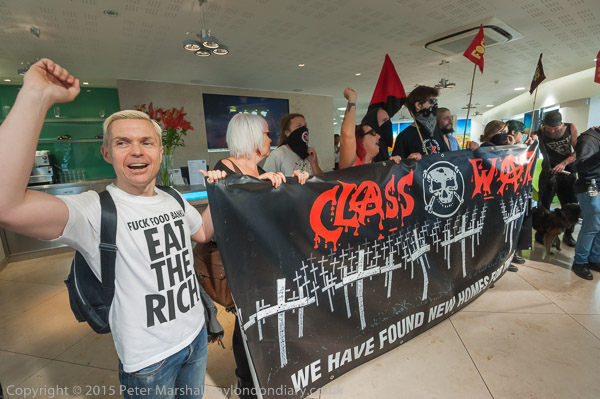
D700, 16-35mm at 16mm, 1/250s, f/8, ISO 2,500
Class War Occupy Stratford Foxtons: Police soon blocked entry to the shop, keeping most of the marchers on the street outside. Those inside were well-behaved, careful to cause no damage, and after around ten minutes left voluntarily to continue the march.
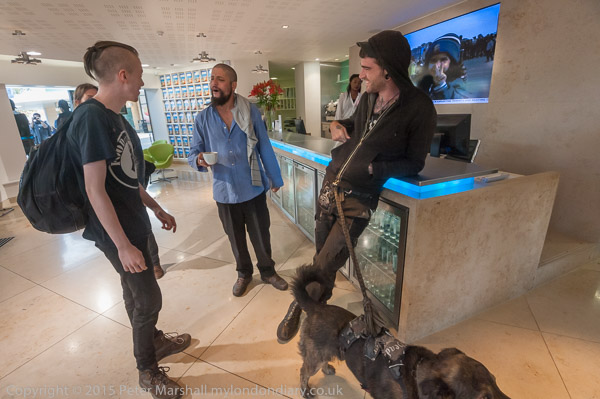
D700, 16-35mm at 16mm, 1/250s, f/8, ISO 2,500
The march stopped briefly outside Newham’s Housing Office, Bridge House on Stratford High St to put up banners and talk to marchers. The Housing for All campaign have supported a number of people at interviews here, often managing to get the authority to find housing in or close to the borough after they have been told they would have to go to Hastings, Birmingham or elsewhere.
From there it was a short walk to the Carpenters Estate and the Focus E15: Anniversary of Carpenters Occupation party in front of the block that they occupied for a couple of weeks a year ago. Those four flats now have new tenants, but only 28 of around 400 empty properties have been relet, and Newham is still trying to clear the estate.
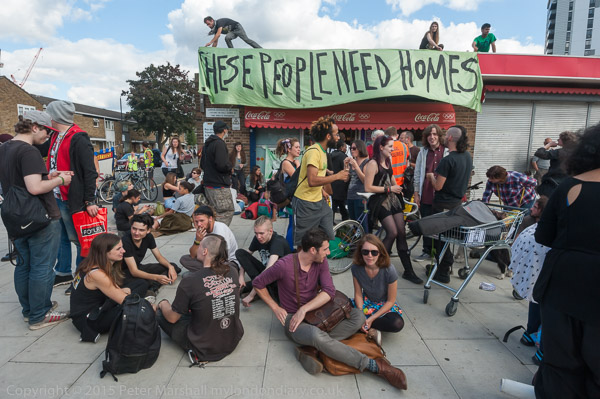
D700, 16-35mm at 19mm, 1/400s, f/10, ISO 640
It was a good afternoon for a party and there were speeches and music and a release of grey balloons representing the many homeless and evicted people across London.
But I didn’t stay long, as I’d been on my feet too long and my legs were beginning to ache and I left as soon as the balloons had been released.
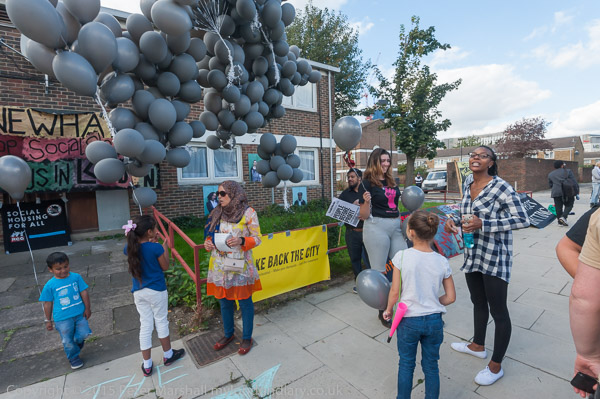
D700, 16-35mm at 16mm, 1/320s, f/9, ISO 640
Continue reading Housing protest – Focus E15
